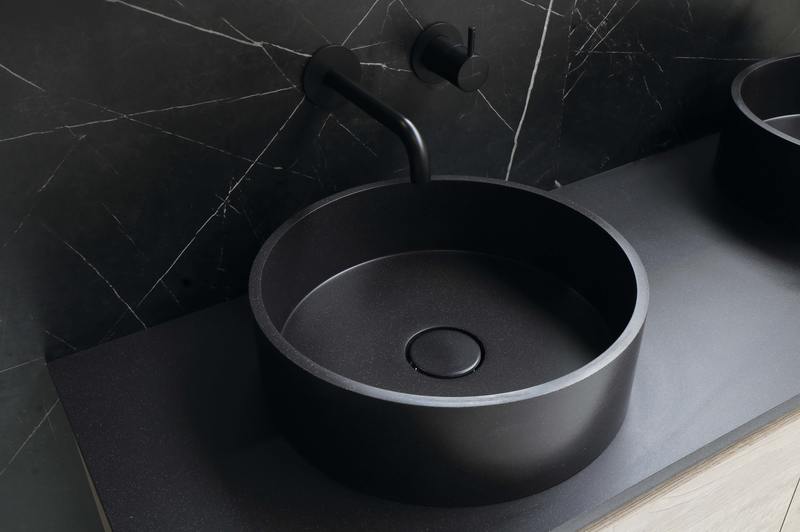Having a stressful weekend looking up for ‘how to get rid of mold in sink drain’ articles? Save all the energy because we got you covered!
We all know that mold and mildew spores can be found almost anywhere, but they only grow when the conditions are correct, and they love to hang out in your kitchen drain. Mold can be identified by sensing a musty stench, even if you can’t see it, and the result could be respiratory difficulties and allergic reactions.

Here’s an article about how to get rid of black mold in sink to give you extra tips for stubborn stains and molds. Even if you have a garbage disposal, killing mold in sink drains and keeping it away isn’t tough.
Mold Solutions For Sink Drains
Mold grows on the undersides of the strainer and stopper, as well as the drain tailpiece, which is the vertical pipe that runs down to the P-trap. If you can, remove the strainer and stopper to gain access to the tailpiece, which is the best approach to remove it with soap and water.
Scrub the strainer and stopper with detergent and water, then scrub the interior of the tailpiece with a bottle brush dipped in dish soap.
Unless you can’t remove the strainer, disconnect the P-trap to gain access to the tailpiece. Although mold cannot form in the water inside the trap, it is a good idea to clean it out while it is off.
Alternatives To Typical Cleaning
You may choose not to remove the strainer or unscrew the P-trap, or you may wish to destroy mold in shower drains where the pipes are inaccessible.
In that scenario, the next best choice is to clean the drain with chemicals. The combination of vinegar and baking soda creates a powerful foaming drain cleaner that disinfects and deodorizes at the same time.
Step #1. Pour 1/2 cup baking soda into the drain, 1/2 cup vinegar, then cover for around 10 minutes to keep the foam contained in the pipe.
Step #2. Rinse with a gallon of boiling water containing 1/2 cup of salt.
Step #3. If you have metal pipes, the water can be extremely hot; if you have plastic pipes, use hot tap water to avoid injuring them.
You can check this article on what essential oils kill mold for alternative cleaners.
Maintaining The Drainage System
Maintaining the drain by treating it with a vinegar/baking soda “volcano” on a regular basis is a smart technique to keep it clean. For maintenance, reduce the portions of each component by half.
A similar mold-killing cleaner can be made by mixing borax, vinegar, and hydrogen peroxide, which will froth when mixed with water.
Step #1. Sprinkle some baking soda straight in the drain and then leave it for an hour or two.
Step #2. Flush with hot water to kill mold and deodorize.
Enzyme-based drain cleaners are effective in killing mold, but they frequently evaporate before they have a chance to do so.
Garbage Disposal Cleaning
Mold can be especially dangerous in a garbage disposal, where it thrives on the constant stream of food scraps. You can follow this 2-step routine below.
Step #1. Stop the sink and then fill it along with soapy water.
Step #2. Run the garbage disposal until it drains as part of regular garbage disposal maintenance.
Here’s another routine therapy that can help manage mold. This works effectively when combined with other easy measures like putting one or two diced lemons in the garbage once or twice a week.
Step #1. Fill the garbage disposal with some ice, pour in a half cup of vinegar then turn on the cold water, and run the garbage disposal until all the ice is gone.
Step #2. Adding 1/2 cup kosher salt to the disposal blades helps disinfect and keeps them sharp.
Cleaning Steps For Pipes And Sink Drain
Step #1. Boil the water and then dump it down the drain. Allowing the boiling water to run for a few minutes is another option.
Boiling water down the drain can thoroughly clean the pipes and drains in the sink.
Step #2. Combine the vinegar and baking soda in a mixing bowl.
Step #3. Fill the drain with a quarter cup of baking soda and a cup of white vinegar. This baking soda and white vinegar mixture should be clean after 10–15 minutes.
Preventing Mold With Dehumidifiers
A sink pipe and drain are common areas for mold to spread because of the intensive moisture. Dehumidifiers are an excellent technique to remove excess moisture from your indoor spaces.
If you utilize these devices on a daily basis, you’ll reduce your chances of getting a significant mold problem. They can be used in a variety of locations, such as the basement, kitchen, and bathroom.
Conclusion
Mold thrives in dark, damp environments, and sink pipes provide an ideal breeding ground for mildew spores. The growth can clog drains and emit an unpleasant odor into your kitchen or bathroom.
If you have a mold and mildew colony in your pipes, there’s no need to use harmful, caustic chemical cleaners. Environmentally friendly household cleaners will suffice.
Hopefully, with all these methods, your queries and need-to-know facts about how to get rid of mold in sink drain are answered.
